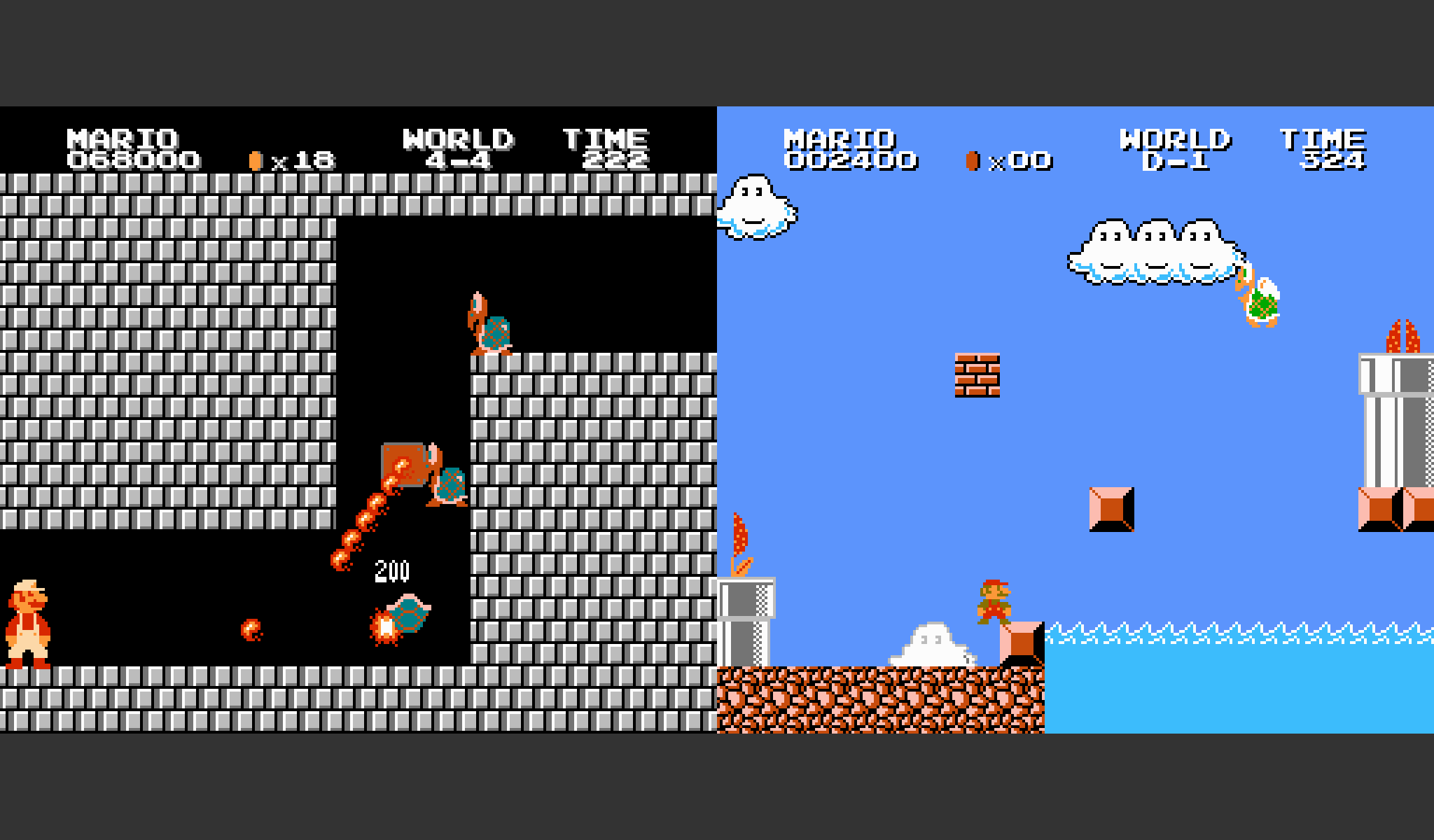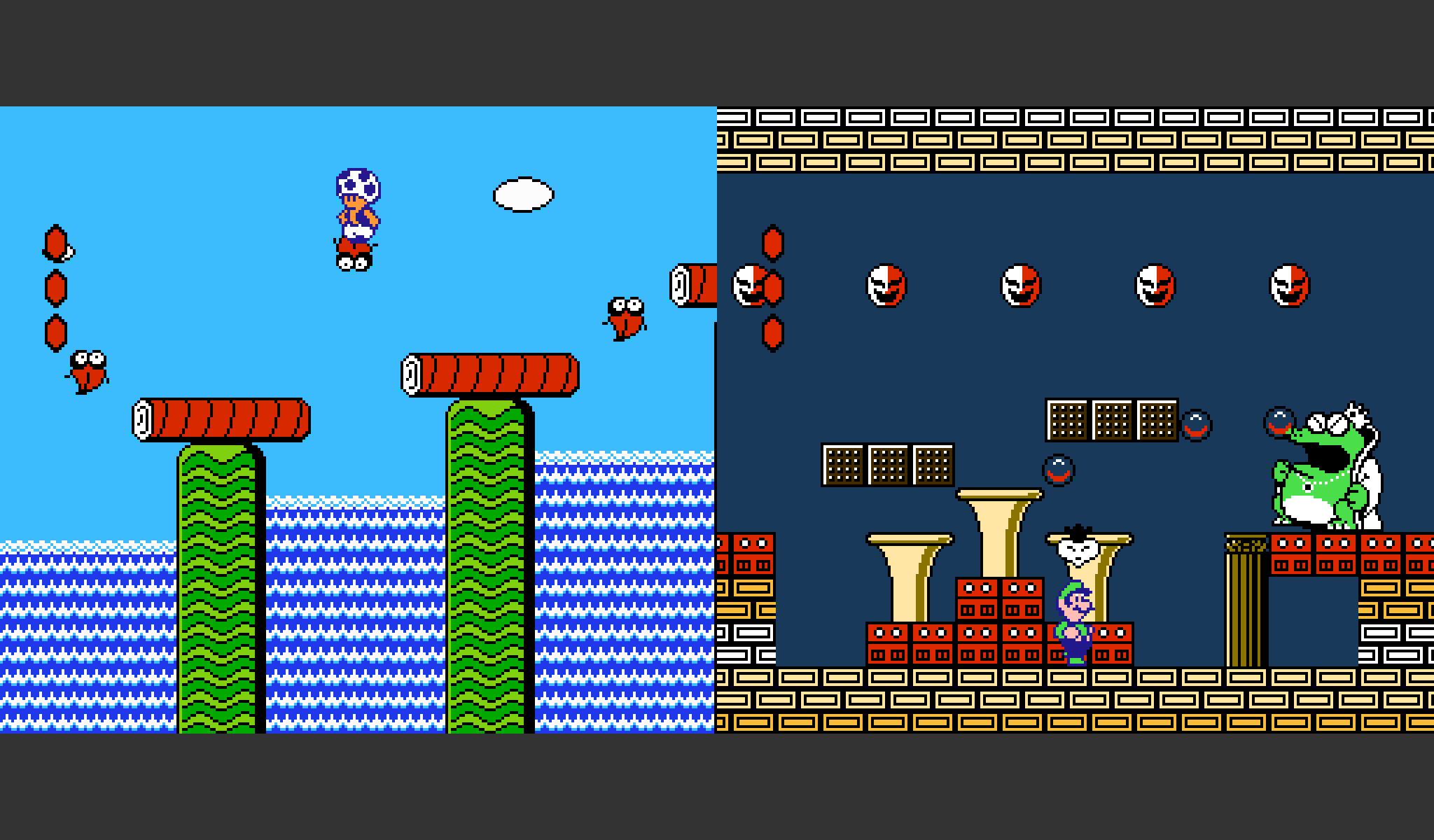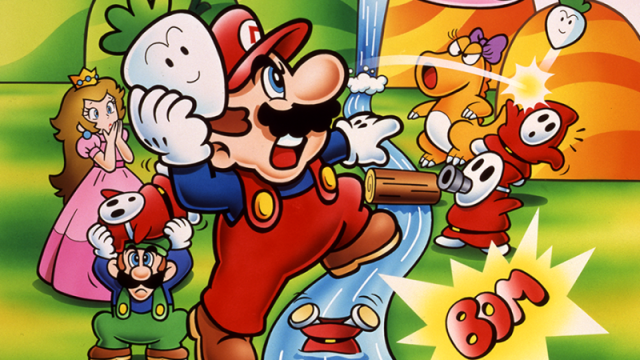Every discussion about the American version of Super Mario Bros. 2 invariably turns to its origins as a completely different game. “It’s not the ‘real’ Super Mario Bros. 2,” is a fact some folks are more than happy to point out, and in some ways, they’re absolutely right. I just don’t think it matters all that much when the replacement is so much better than the original.
But before I get into that, let’s make sure we’re all on the same page.
After the massive international success of the original Super Mario Bros. in 1985, Nintendo was quick to begin work on a sequel. This follow-up, the appropriately named Super Mario Bros. 2, came out for the Famicom Disk System in 1986. While it offered some novelties, like the player bouncing higher after stomping on an enemy and differing jump physics between Mario and Luigi, the engine was still heavily based on the first game.

The Japanese version of Super Mario Bros. 2 was more like an expansion of the original than a completely new game. In some ways, it was also like a romhack, since a lot of the levels were complete bullshit. Super Mario Bros. 2 played on common knowledge from the first game, like mushrooms and warp pipes, and punished the player for expecting them to function the same way. Some mushrooms were poisonous. Certain pipes would warp you back several levels rather than to subsequent worlds. The stages were overwhelmingly difficult, with hazards like unpredictable piranha plants and wind.
“As I continued to play, I found that Super Mario Bros. 2 asked me again and again to take a leap of faith and that each of those leaps resulted in my immediate death,” former Nintendo of America “Game Master” Howard Phillips wrote in the foreword to Jon Irwin’s book on the game’s history and legacy. “This was not fun gameplay, it was punishment — undeserved punishment.”
Fearing that the game would be too hard for American audiences, then-Nintendo of America president Minoru Arakawa declined to publish Super Mario Bros. 2 in North America, instead asking the company’s Japanese headquarters for something else. What they decided on was retooling an existing game called Doki Doki Panic with elements from the Mario series and marketing it as a sequel in the United States. It wasn’t until Super Mario All-Stars was released for the Super Nintendo in 1993 that Western audiences would get a chance to play the original Super Mario Bros. 2…which was dubbed Super Mario Bros.: The Lost Levels to avoid confusion.
Apart from the weird “Americans won’t be able to play our difficult game” exceptionalism that was common in Japan at the time, I love that story! Not only did Nintendo act on some good advice, it also gave us twice as much Mario, which is never a bad thing. Fortunately, the Super Mario Bros. 2 created for the United States is plainly a better game, and has impacted the Mario canon — yes, Mario games have lore and some of us, against all odds, actually care about it — more thoroughly than the “real” Super Mario Bros. 2.
The biggest draw of Super Mario Bros. 2 USA is its originality. While it’s still a side-scrolling platformer, there’s a greater emphasis put on verticality and exploration. Levels are full of vines, portal-opening potions, and secret passages that can greatly change a player’s experience. This is compounded by the introduction of four playable characters, each with their own strengths and weaknesses. Mario is the jack of all trades, Luigi jumps higher, Peach can float, and Toad digs faster.
And unlike Super Mario Bros. 2 in Japan, Super Mario Bros. 2 USA’s borrowing of gameplay mechanics from Doki Doki Panic turns Mario conventions on their heads, in a good way. Jumping on enemies no longer kills them. Instead, the player is supposed to pick them up and use them as weapons against the other enemies. It’s a change that may seem small on paper but completely changes how you approach every encounter. There’s also an incentive to skip, for lack of a better word, enemies across the heads of their buddies, since racking up kills rewards you with floating hearts that refill your health.
Super Mario Bros. 2 USA is difficult in the way most NES games were difficult, but it’s a different sort of challenge than Super Mario Bros. 2. Where the Japanese original is all about trolling experienced Super Mario Bros. players, Super Mario Bros. 2 USA introduces a variety of new gameplay mechanics and asks the player to think outside the box about how to use them. There’s a moment in the very first level where you have to time throwing a bomb into a hole so that it explodes as it passes a breakable wall. You only get two shots, and if you screw up both, you don’t get to go to a secret area. The end-of-level Birdo fights are a lesson in timing your jumps and snatching eggs out of the air to use as weapons. Even the game’s end boss, Wart, poses a more interesting challenge than Bowser.
The influence Super Mario Bros. 2 USA has had on the rest of the series is also super obvious. It introduced characters that have since gone on to become staples of the Mario universe, like Bob-ombs and Shy Guys. The existence of Luigi’s unique floating jump and Peach’s hover in subsequent games and spin-offs can be traced directly to the skills they borrowed from their analogues in Doki Doki Panic. Even the simple ability to toss enemies and items carried over to other games. In that way especially, Super Mario Bros. 2 USA feels like a more natural progression from Super Mario Bros. to Super Mario Bros. 3, which also places a measure of importance on grabbing and throwing stuff.

It’s because of this that Super Mario Bros. 2 USA will always be the “real” Super Mario Bros. 2 in my eyes. Nintendo’s original take on a sequel to the iconic Super Mario Bros. is somehow both too safe and too extreme at the same time. Very little effort was put into making it a true evolution of the Mario formula, and it still feels like a cruel joke meant to crush experienced Super Mario Bros. players rather than give them more of what they loved. It’s a fun diversion if that’s what you’re looking for, but doesn’t really push the series forward quite like its American counterpart.
Maybe this isn’t controversial. I haven’t polled Mario fans about which version of Super Mario Bros. 2 they like more. I just think it’s fun to examine Super Mario Bros. 2 USA in context. It’s no less legitimate than the 1986 Super Mario Bros. 2 just because it didn’t start out as a Mario game. Many of the same developers who worked on Doki Doki Panic contributed to the creation of Super Mario Bros. and its Japanese sequel, after all. It’s clear that working on a new property gave them lease to experiment and iterate, and I’m so glad the mainline Mario series was able to borrow some of that magic.
Would other Mario outliers like Super Mario Sunshine, Super Mario RPG, and Yoshi’s Island exist without the oddity of Super Mario Bros. 2 USA? Who knows? But it’s nice to think about.

Leave a Reply